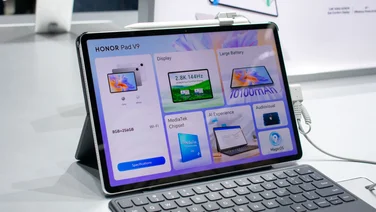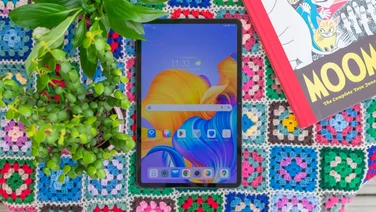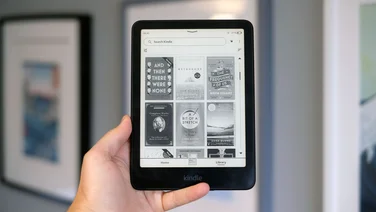To help us provide you with free impartial advice, we may earn a commission if you buy through links on our site. Learn more




LG’s Optimus Pad is unique in a number of ways, the most obvious being its dual cameras that can capture video in 3D. It’s also the only tablet we’ve seen with an 8.9in screen, but with a resolution of 1,280×768 this actually makes for a crisper image. Strangely for an Android 3.0 device, the Pad doesn’t have a microSD memory card slot, which means you have limited space to store your 3D films. It does however have a SIM card slot for 3G data support.

The distinguishing features on the rear are those twin cameras
Our review sample was a pre-production model, which we were told didn’t have up-to-date software, but it felt well-built and worked fine. We expected it to be heavy, a prejudice based on the hefty Optimus 3D smartphone, but in fact the Pad turns out to be one of the lightest of the larger tablets, and at 621g it’s only 20g heavier than the Apple iPad 2.
The plastic case has a dark brown satin finish that’s east to grip, while a strip around the edge protects the ports. While the two cameras are mounted horizontally to the landscape orientation, the LG logo is placed to the left of the screen in a portrait orientation, which is a bit confusing. A strip of the case on the back left side detaches, revealing the SIM card slot.
The screen is a standard TFT, unlike some IPS-fitted tablets we’ve seen, but it’s still bright and has excellent viewing angles. Contrast is great, with strong colours thanks to a glossy screen finish. This has the downside of reflecting bright objects and lights, so you’ll have to adjust its position carefully to get the best picture.

The HDMI and USB ports, which sit on the bottom edge, or left-hand side, depending on how you hold it
Headphone and power sockets are on the left edge along with the power button, with a volume rocker on the top edge. The bottom edge hold mini-HDMI and micro-USB ports, along with metal contacts to connect to a dock, although details of optional accessories are not yet available. There are also grilles for the internal speakers, which are clear but disappointingly quiet.
Like Samsung, LG often replaces standard Android icons with garish alternatives, but luckily our preview sample came with the standard Android layout. The only additions were a copy of Polaris Office for viewing and editing office documents, and a copy of Google’s Books app. The Google Books store isn’t yet available in the UK, but it still lists free books in the public domain that you can download. However we couldn’t find where it stored its files, and it didn’t find the ePub and Mobi test files we placed on the disk.

There are also two apps for 3D: a 3D Camcorder and a 3D viewer. The 3D Camcorder defaults to anaglyphic 3D, to match the red-and-blue-tinted glasses that come in the box, but “mixed” and side-by-side modes are also available for viewing on a 3D TV or display later.
Movies recorded with the Pad store all the necessary information, however, for conversion to other formats, although the files are in 3GP format and can’t be played directly on most TVs. YouTube recognised the format successfully and displays it in red/cyan mode, while connecting via HDMI to a Sony HDTV allowed us to watch using active shutter glasses.

However, we didn’t like any of the results. The red/cyan glasses caused unnatural colouring, while the active shutter mode suffered from heavy ghosting, however much we adjusted the depth slider. It’s also a shame that the tablet doesn’t have a glasses-free 3D display.
Finally, we come to the price. At £750, it’s extraordinarily expensive even for a tablet than can shoot 3D video. The most expensive iPad 2, with 64GB of storage and 3G, is £659 direct from Apple. If the Pad’s 3D capture was effective enough, LG might be justified in adding a price premium, but it isn’t. The excellent Samsung Galaxy Tab 10.1 is lighter, lasts for ten-and-a-half hours playing video, and costs almost half the price.






